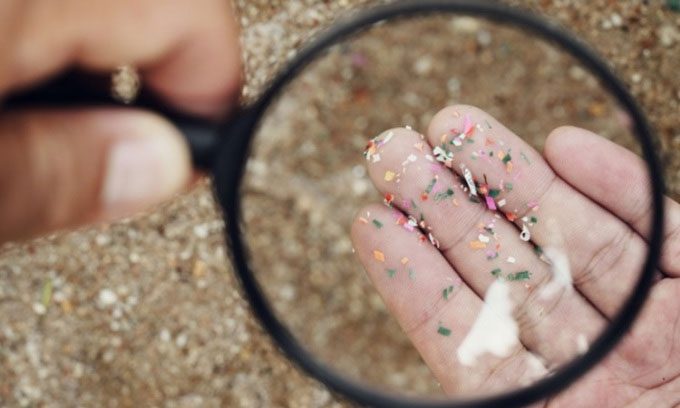Researchers have found microplastics in 100% of the human placentas they examined and speculate that microplastics may be transmitted to the developing fetus.
A team from the University of New Mexico analyzed placentas from 61 women and discovered that each placenta contained plastic fragments measuring less than 5 mm in length. These plastic particles ranged in size from 6.5 to 790 micrograms, with an average density of 128.6 micrograms per gram of donated placenta. The most common type of plastic found in the samples was plastic used in nylon bags and bottles, comprising 54%, while materials used in construction accounted for 10%, and the remaining 9 types of plastics made up the rest. The research findings were published in the journal Toxicological Sciences, as reported by Mail on February 22.

Microplastics found in placentas sized 6.5 – 790 micrograms. (Photo: Newsweek).
Microplastics are associated with cancer, reproductive issues, and dementia. Some scientists and public health experts fear that they could lead to low birth weight in newborns. “If we see the impact in the placenta, then all mammals on this planet could be affected. That’s not good at all,” said Matthew Campen, co-author of the study.
Plastics dumped in landfills release tiny particles into groundwater and can sometimes become aerosols, contaminating food, water, and bodies. According to Campen, the problem will worsen over time as all the plastics in the environment degrade and turn into microplastics with increasing density.
While many believe the placenta serves as a barrier to the outside world, it seems they are not safe from microplastics. Campen and colleagues developed a new method that allows them to filter tiny particles from tissue samples taken from each placenta. This method, known as pyrolysis-gas chromatography-mass spectrometry (Py-GC-MS), involves heating the samples until they combust.
Different materials and chemicals ignite at different temperatures, producing chemical signatures that Campen’s team and their equipment can capture. They can create a complete picture of all sizes and shapes of plastic particles present in the tissue. In this study, the scientists examined placentas, but Py-GC-MS can analyze any available tissue, according to Campen, a professor of pharmaceutical sciences at the University of New Mexico. The only limitation of this method is that it cannot be applied to living humans.
Most research thus far has been limited by the ability to observe the smallest microplastic fragments with optical microscopes. One micrometer is the smallest size of microplastic that a conventional optical microscope can detect. However, with the Py-GC-MS method, Campen and colleagues can see plastic particles as small as nanometers. This is a significant advancement for scientists in the field, as environmental microplastics continuously degrade and become smaller.
Campen and colleagues are currently using Py-GC-MS to analyze forensic samples, and initial results align with the findings of their research. However, based on this study, it is still too early to be concerned about microplastic exposure during pregnancy. Researchers speculate that the presence of microplastics in the placenta suggests they could enter the developing embryo. However, they still do not know the exact long-term effects of microplastics on mothers and fetuses.


















































